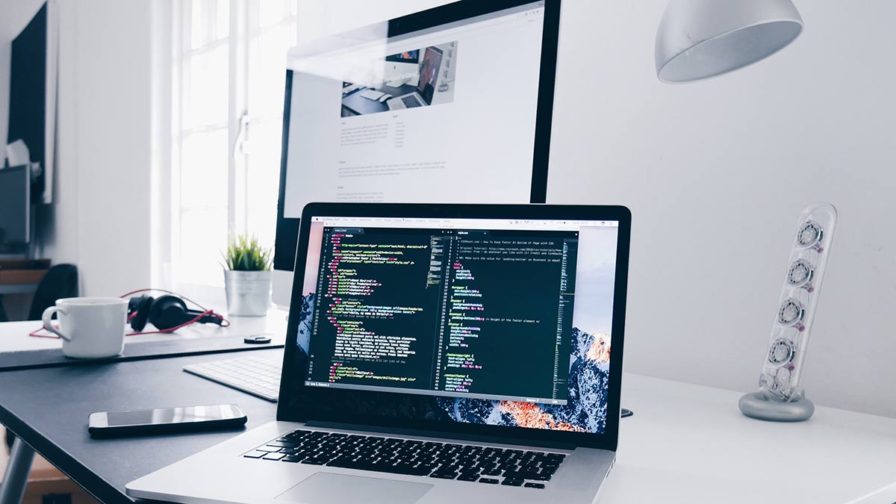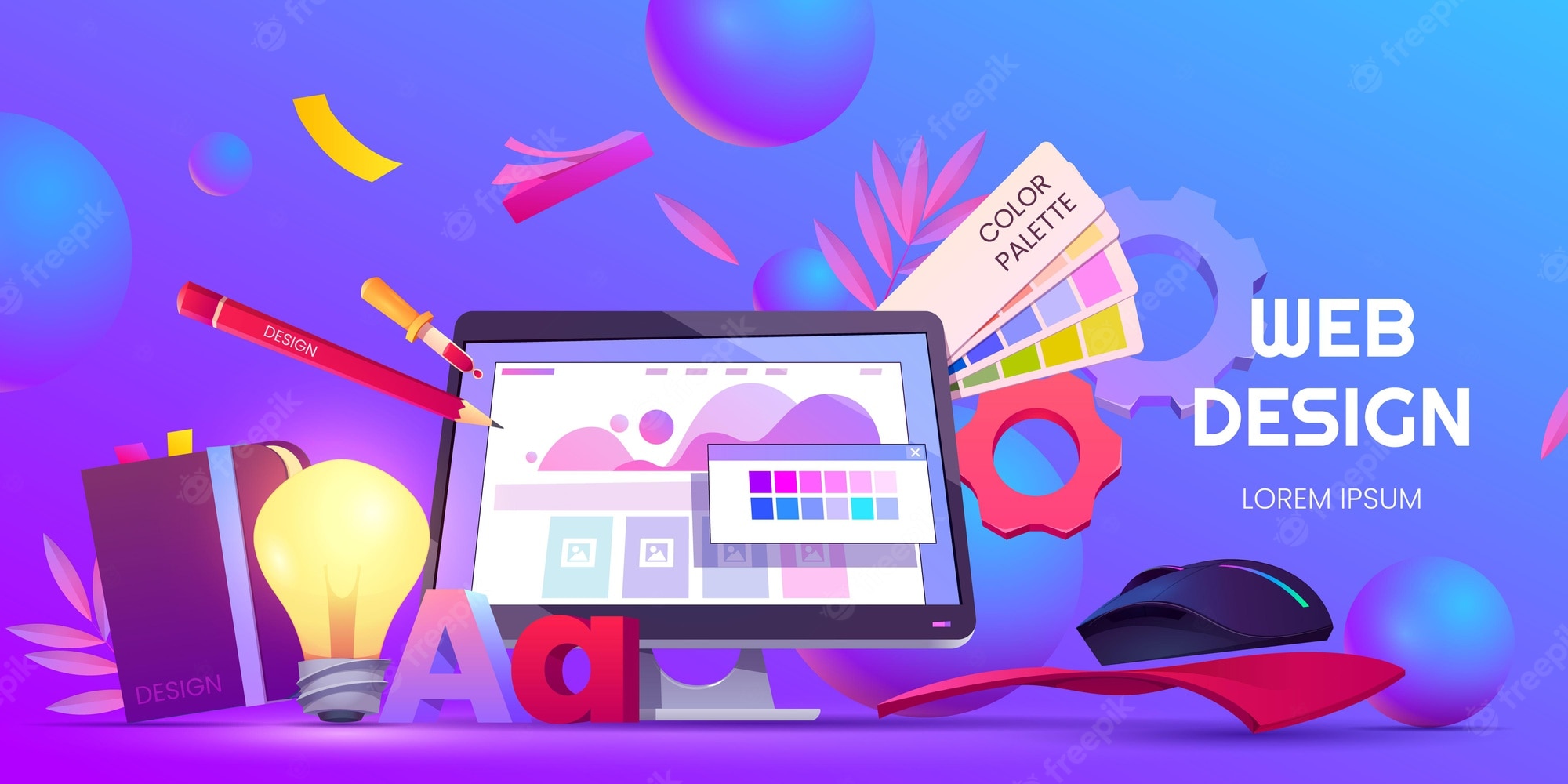Checking Out Innovative Fads in Web Design for Modern Organizations
The landscape of web design is constantly developing, showing the vibrant requirements of modern-day companies. Current fads highlight a choice for minimalism, vibrant typography, and engaging interactivity. Business significantly focus on user experience through mobile-first concepts and customized content. Additionally, an emphasis on sustainability is acquiring traction. Recognizing these patterns is vital for companies aiming to stick out in a congested marketplace. What implications do these changes hold for the future of digital interaction?
Accepting Bold Typography
Strong typography has become a specifying aspect in modern web design, recording focus and conveying messages with striking quality. This fad focuses on visually impactful message that boosts user engagement and brand identification. Developers usually use one-of-a-kind typefaces and large font styles to create a pecking order, guiding visitors via material effortlessly.
The strategic use of vibrant typography permits effective storytelling, allowing brands to connect their worths succinctly. It offers not only visual purposes however also practical ones, as it enhances readability across tools and display sizes.
As sites complete for user focus, bold typography attracts attention in a saturated electronic landscape. Its adaptability allows developers to try out contrasting formats and colors, better amplifying its performance. Eventually, welcoming vibrant typography stands for a shift towards more expressive and communicative web design, cultivating a deeper connection in between brand names and their target markets.
The Increase of Minimalist Style
As digital settings come to be significantly messy, the surge of minimal layout supplies a revitalizing choice that focuses on simpleness and capability. This style philosophy remove unnecessary elements, allowing material to take facility stage. By concentrating on tidy lines, sufficient white area, and a limited color palette, minimal layout boosts user experience and improves navigating.
Companies embracing this fad goal to share their brand message plainly and properly, promoting a feeling of calmness and clearness. The lack of distractions helps users focus on essential details, resulting in boosted interaction and conversion prices. In addition, minimalist design aligns well with mobile-first strategies, ensuring that websites remain straightforward and easily accessible throughout various gadgets.
Inevitably, the increase of minimalist design shows a more comprehensive shift in the direction of prioritizing user needs and preferences, making it an effective tool for modern-day services aiming to make a long-term influence in the digital landscape.
Immersive Animations and Interactivity
While several internet designers embrace minimal appearances, an additional compelling trend gaining traction is the usage of immersive animations and interactivity. This approach enhances user involvement by creating interesting experiences that attract visitors right into the material. Developers employ vibrant aspects such as animated backgrounds, scrolling effects, and interactive infographics to communicate complex ideas in an accessible manner.
These computer animations not only provide visual passion yet additionally guide users via the navigation process, making interactions more instinctive. For example, float results and animated shifts can motivate users to check out better, resulting in raised time invested on the site.
In addition, this trend straightens with the wider motion towards narration in web design, where animations function as narrative devices that share brand name messages successfully. By integrating immersive computer animations and interactivity, businesses can separate themselves in a jampacked online landscape, eventually boosting user contentment and brand name loyalty.
Mobile-First Layout Principles
Mobile-first layout concepts emphasize prioritizing user experience by guaranteeing internet sites operate seamlessly on smaller displays. This technique integrates receptive design strategies that adapt to different device sizes while preserving visual stability. Furthermore, it concentrates on touchscreen navigating design, improving usability for mobile users.
Focusing On User Experience
Exactly how can designers effectively prioritize user experience in an increasingly mobile-centric world? Emphasizing mobile-first design principles is necessary, as individuals mainly engage with web sites through mobile phones. This approach encourages developers to streamline material, ensuring it is accessible and quickly accessible on smaller sized screens. Trick methods consist of simplifying navigation, decreasing lots times, and utilizing touch-friendly elements that boost interactivity. Additionally, prioritizing readable typography and instinctive designs can considerably improve user fulfillment. Designers ought to constantly gather user feedback to improve their methods, adapting to advancing user demands and choices. By concentrating on these aspects, companies can create an interesting digital experience that cultivates commitment and drives conversions, inevitably straightening with the expectations these days's mobile users.
Receptive Layout Strategies
Designers welcome responsive format methods to develop adaptive and adaptable web experiences that accommodate numerous display dimensions. This method prioritizes mobile-first design concepts, making sure peak capability on smaller sized devices prior to scaling up for larger displays. By making use of fluid grids, versatile images, and media inquiries, designers can preserve a cohesive aesthetic identification across all systems. This approach not only boosts user engagement however likewise improves online search engine rankings, as mobile-friendly sites are favored by search formulas. Furthermore, receptive formats enable services to reach a broader audience, suiting individuals on smart devices, tablet computers, and desktops alike. Overall, executing these techniques is crucial for contemporary web design, making certain that companies stay affordable in an ever-evolving digital landscape.
Touchscreen Navigation Style
With the rise of mobile tools, try here touchscreen navigation has actually become a fundamental facet of web design. Developers are significantly embracing mobile-first principles to enhance user experience and interaction. Website Design Agency. Effective touchscreen navigation prioritizes bigger buttons and intuitive gestures, allowing users to connect conveniently with web content. This method decreases irritation and urges expedition, as customers can browse seamlessly with their fingers. In addition, integrating swipe motions and tap capability accommodates the natural habits of mobile individuals. Responses systems, such as aesthetic signs and animations, improve functionality further by confirming activities. As touchscreens dominate user communications, utilizing these layout components not only aligns with modern-day assumptions but likewise cultivates an extra satisfying and easily accessible surfing experience for all individuals
Individualized User Experiences
What makes an individual really feel genuinely involved on an internet site? The answer frequently lies in customized user experiences. By customizing web content and navigating to individual choices, try here companies can develop a purposeful connection with their target market. This customization can be achieved with various approaches, such as analyzing user behavior, using cookies, and using customized suggestions based on previous communications.
For example, shopping platforms that suggest items based on surfing background not only improve user experience however also raise conversion prices. Incorporating vibrant material that adapts to the user's location or time of day can better improve involvement.
In addition, personalized greetings or messages can make customers feel valued and recognized. As contemporary businesses venture to stand out in a competitive electronic landscape, accepting individualized user experiences ends up being essential, promoting commitment and encouraging repeat check outs. Eventually, this method changes a basic internet site into an interactive platform that resonates with its target market.
Sustainability in Web Design
As the electronic landscape remains to evolve, the value of sustainability in web design has actually gained significant interest. Designers are progressively knowledgeable about the ecological influence their developments can have, prompting a change towards environment-friendly methods (web design company). Sustainable web design concentrates on enhancing internet sites to reduce energy usage and carbon footprints. Techniques include using minimalistic design principles, optimizing photos, and employing effective coding practices to enhance loading rates
The selection of hosting suppliers plays an important role; lots of designers are now deciding for green holding services powered by eco-friendly power. By prioritizing ease of access and straightforward navigating, sustainable designs additionally accommodate a broader audience, boosting functionality. This conscious strategy not only attract environmentally-minded customers however also adds to the overall long life and effectiveness of internet sites. Inevitably, sustainability in web design reflects an expanding trend in the direction of responsible electronic methods that straighten with contemporary company worths.

Often Asked Questions
How Can I Pick the Right Color Plan for My Internet site?
To see page select the appropriate color pattern for a web site, one should think about the brand's identity, target market, and psychological impact. Utilizing color theory and testing mixes can boost user experience and aesthetic charm significantly.
What Are the most effective Tools for Prototyping Website Design?
The best devices for prototyping internet layouts consist of Figma, Lay out, Adobe XD, and InVision. These systems supply user-friendly interfaces, partnership functions, and considerable collections, making them excellent for developers to develop and improve their principles effectively.
How Do I Measure the Efficiency of My Web Design?
To measure web design efficiency, one ought to evaluate user engagement metrics, conversion prices, and functionality comments (web design company). A/B screening and heatmaps can likewise give understandings right into user habits, assisting needed modifications for improved performance and user experience
What Are Common Web Design Blunders to Avoid?
Typical web design blunders include chaotic designs, bad navigating, slow packing times, absence of mobile optimization, poor comparison, and neglecting user responses. Avoiding these mistakes improves user experience and raises overall efficiency of the site.
Exactly how Usually Should I Update My Website Design?
A website layout must be updated every 2 to 3 years, or sooner if considerable modifications in branding or technology take place. Normal updates keep the website fresh, useful, and aligned with current user assumptions.
